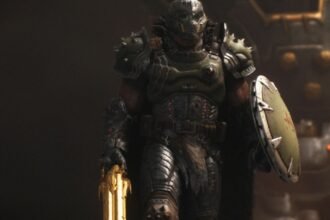Rewind 30 or 40 years, and you’ll find that video game cover art faced some notable challenges. It often lacked consistent style guides and was sometimes created in isolation by individuals unfamiliar with the game’s actual appearance. Limited by the available concept art, data, and technology, these covers sometimes promised a fantasy that wasn’t accurately reflected within the game’s actual content.
Despite these challenges, this period led to the creation of thousands of remarkable illustrations that remain vivid in players’ minds, often as memorable as the games themselves. Last year, Bitmap Books published "The Art of the Box," showcasing over 350 of these artworks in a 564-page book that highlights the contributions of 26 illustrators, who became renowned for their work on early game box art.
To celebrate game-related literature and films, Polygon has introduced an email interview series with the creators behind them. You can explore the full list to learn about works like an "Immortality" book and a "Street Fighter 2" documentary. In one of these interviews, Bitmap Books founder Sam Dyer shares insights into "The Art of the Box," his admiration for classic game art, and the journey of tracking down the illustrators and their creations.
Polygon: The book’s concept beautifully highlights both the illustrators and their art. How did this idea originate?
Sam Dyer: "The Art of the Box" was an idea I conceived at the outset of Bitmap Books. I’ve always had a deep appreciation for art, and some of my fondest childhood memories of games revolve around their captivating cover art. Moments like unwrapping a Batman game on Christmas with its stunning gold logo or browsing through rows of game boxes at a local store are unforgettable. With the gaming industry’s pivot away from physical media, it felt like the perfect time to document the craft of game cover art in a way that preserves this fading art form. The project gained momentum following the untimely death of artist Bob Wakelin, instilling a sense of urgency to create "The Art of the Box." Collaborating with long-time partner Steve Jarratt, who handled the editorial aspects, allowed me to concentrate on design and image acquisition, making the project less daunting.
Were there specific criteria for selecting illustrators for the book?
Quality was paramount, but the biggest hurdle was identifying artists who were both interested and had high-resolution scans of their work. Early on, we decided that the art should be displayed in its unaltered form, without logos or text, to be appreciated as pure art. This decision made it challenging to assemble a roster of contributors, but after persistent communication and efforts, we succeeded. I’m very proud that the book features 26 artists, including Bob Wakelin, Steve Hendricks, Ken Macklin, Tom DuBois, Steinar Lund, Marc Ericksen, Julie Bell, and Susumu Matsushita, among others.
Did the collector’s market for these original artworks pose any challenges or advantages in sourcing images for the book?
While aware of the collector’s market, there was some unwillingness among collectors to share their pieces for the book. Though entirely within their rights, this hesitance meant that we couldn’t feature certain artists who hadn’t preserved high-resolution images before selling their originals. Nevertheless, collectors like Nicola Ferrarese were incredibly supportive, providing access to their collections and generously contributing their time.
Were there any particularly challenging images to source for the book, and do you have any interesting stories about the process?
Although no single image stands out, we often faced difficulties when artists lacked photos of their artworks before selling the originals. In these cases, we had to reach out to the community and conduct extensive online research. When these efforts came up short, we collaborated with Gary Arnott and Jefferson Taylor, who, with the original artists’ approval, helped restore and enhance lower-quality images to meet the book’s standards.
Do you have a personal favorite piece in the book?
Dermot Power’s "Golden Axe" artwork for home computer ports is a standout for me. I’ve long admired Dermot’s work in comics and video games, and seeing the full "Golden Axe" piece in its entirety was breathtaking. Growing up, I only knew the cropped version on the game box, so discovering the intricate details in the complete piece was astonishing. I also appreciate that it was painted directly onto blackboard, lending it a rich, moody quality that perfectly complements the game.









